TL;DR - It is not possible unless the cost of each edge on the cycle is 0. Otherwise, including the cycle in the shortest path would add unnecessary cost to the shortest path (meaning it would no longer be the shortest path).
Background:
Dijkstra's operates by maintaining two sets of vertices. One set is the vertices that have already been marked and the other set is the vertices that have yet to be marked. Given these two sets, Dijkstra's algorithm looks for the next cheapest element to add to the list of marked vertices and then updates the shortest paths to unmarked vertices.
In the case that A-B-C have been marked and the next edge added is C->B, B would be reached twice and the cost to get to B from A with the cycle included is [x + p + q]. However, the cost of getting to B from A without the cycle would obviously be [x]. Now the shortest path from A to D with the cycle is [x + p + q + r], while the shortest path without the cycle would be [x + r]. If p and q are both greater than 0, we see the path without the cycle will be shorter.
In the general case (with positive costs of edges), a cycle will never be included because the shortest path would contain unnecessary extra cost to get back to the starting point of the cycle.
If the U-turn is actually the shortest path:
For Dijkstra's to work for a necessary U-turn, you could just start the algorithm over from C and search for the shortest path to D (hence the recalculating notification when routing). Another solution could be to modify the underlying graph ahead of time. For example, the path A-B-C-B-D would become A-B-C-Z-D. Alternatively, the edge from C->B and the edge from B->D could both be removed and replaced with a single edge from C->D.
